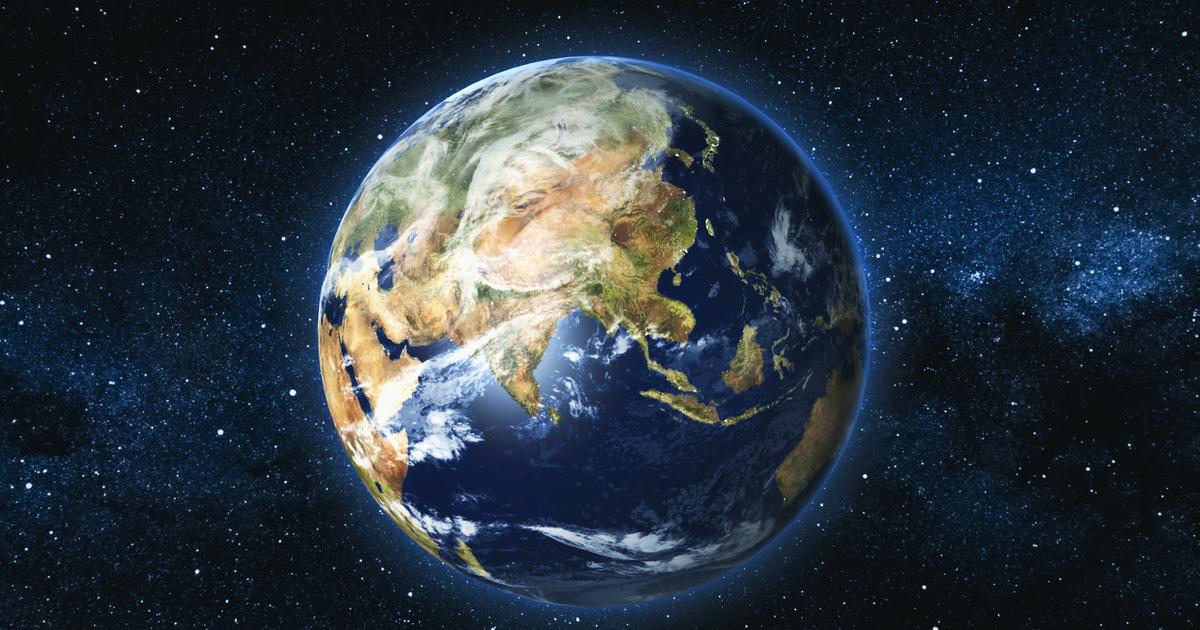Far below the surface of the Earth, a giant may have started to turn in the other direction than us, according to a study whose conclusions should not put an end to the controversy which agitates specialists on the subject.
Earth's core, a burning sphere the size of Pluto, has stopped spinning and may even have gone the other way, suggests this study published Monday in
Nature Geoscience
.
This
"planet within a planet"
essentially made of iron, some 5000 km below the surface, is free to move because it floats in the liquid envelope of the outer core.
The exact mechanism of this rotation remains a subject of debate.
"Swing"
Because the little that we know is based on the fine analysis of seismic waves, caused by earthquakes, when they pass through the center of the planet.
Analyzing seismic wave data over the past sixty years, Xiaodong Song and Yi Yang of Peking University concluded that the rotation of the core
'almost stopped around 2009 before starting back in the opposite direction' .
"We believe that the central core is, relative to the surface of the Earth, rotating in one direction and then in another, like a seesaw,"
they told AFP.
"A full cycle (back and forth) of this swing is about seventy years,"
they say.
Read alsoThe Earth has a rusty heart
The last rotation change before that of 2009 would have occurred in the early 1970s. The next would take place in the mid-2040s, completing the cycle, according to Chinese researchers.
According to them, this rotation would be more or less keyed to changes in the length of the day, tiny variations in the exact time that the Earth needs to rotate on its axis.
To date, there are few indications of an influence of this rotation on what happens on the earth's surface.
But the two authors are convinced that there are physical links between all the layers that make up the Earth.
'We hope our research motivates researchers to design and test models that treat the Earth as an integrated dynamic system,'
they explain.
“Very careful study”
Independent experts welcomed this research with interest but also with some reserve.
"This is a very careful study done by excellent scientists who used a lot of data,"
John Vidale, a seismologist at the University of Southern California, told AFP.
But according to him,
"none of the existing models explains all the available data really well."
John Vidale published a study last year suggesting that the inner core is oscillating much faster, changing direction about every six years, according to seismic data from two nuclear explosions dating back to the late 1960s and early 1960s. 1970. A moment of changeover close to that indicated by the study of Chinese researchers,
according to the American seismologist.
Another theory, with a solid basis according to John Vidale: the inner core only moved significantly between 2001 and 2013, before stabilizing since.
For Hrvoje Tkalcic, a geophysicist at the Australian National University, the inner core cycle is around 20 to 30 years, rather than the 70 years proposed by the study in Nature Geoscience.
“These mathematical models are probably all incorrect”
because even if they explain the observed data, the latter may answer other models yet to be imagined, he says.
The geophysical community therefore has, according to him, every reason to be
"divided on this discovery, and the subject to remain controversial".
Read alsoThe Earth's magnetic field is losing intensity
He compares seismologists to doctors
"who study a patient's internal organs with imperfect or limited equipment."
As if we were trying to understand the functioning of the liver only with the help of an ultrasound.
Without the equivalent of a scanner,
"our representation of the Earth's interior remains fuzzy,"
he says, expecting more surprises in this area.
Like the theory that the inner core conceals within it an even smaller sphere of iron, modeled on Russian dolls.

